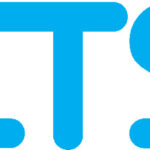New Jersey’s rich musical heritage is undeniable, and while The Moments may not have originated there, their story is deeply intertwined with the Garden State, particularly through their association with Englewood’s All Platinum Studios. This connection is the backdrop to one of their most enduring hits, “Love on a Two-Way Street,” a song that exemplifies the soulful sounds that defined an era and continues to resonate today. The Moments’ journey, marked by shifting lineups and label changes, is a fascinating exploration of the music industry, and “Love on a Two-Way Street” stands as a testament to their enduring appeal.
From DC to NJ: The Moments Find Their Footing
The genesis of The Moments occurred in Washington, D.C., in the mid-1960s when Eric Olfus Sr., Richard Gross, and John Morgan coalesced. Their early sound caught the attention of Hog Records, a fledgling label founded by Howard University alumni. As a trio, they cut their teeth with a single for Hog before Mark Greene joined the ensemble, marking a pivotal moment for the group and their geographical trajectory.
New Jersey entered the picture when The Moments inked a deal with Stang Records. This label, brainchild of the dynamic duo Sylvia and Joe Robinson, operated out of their All Platinum Studios in Englewood, NJ. This partnership proved fruitful quickly. In 1968, “Not on the Outside” became their breakthrough hit for Stang, climbing to #13 on the R&B chart and cracking the Billboard Hot 100 at #57. This early success laid the groundwork for greater opportunities and further cemented their connection to the New Jersey music scene.
The Rise of “Love on a Two-Way Street”
Despite the evolving membership – a constant theme in The Moments’ history – their musical output remained potent. By the time their debut album for Stang was recorded, the lineup featured Billy Brown, Al Goodman, and John Morgan, though the album itself included contributions from a wider array of voices, including, notably, Sylvia Robinson herself.
Amidst this flux, a song emerged that would define The Moments for many: “Love on a Two-Way Street.” Penned by Sylvia Robinson and Bert Keyes in 1968, the track was initially recorded by Lezli Valentine, another artist on the All Platinum roster. However, it was The Moments’ rendition, released two years later, that truly captured the public’s imagination.
 The Moments
The Moments
By 1970, the lineup primarily consisted of Goodman, Brown, and Morgan. Billy Brown’s re-recorded lead vocals, laid over Valentine’s original backing track, transformed “Love on a Two-Way Street” into a soul classic. Initially intended as album filler for Not on the Outside, But on the Inside, the song unexpectedly soared. It claimed the #1 spot on the Billboard Soul Singles chart and reached #3 on the Billboard Hot 100, becoming their signature tune and a staple of soul radio. The song’s poignant lyrics and Brown’s emotive delivery resonated deeply, solidifying its place in music history.
Beyond “Two-Way Street”: Navigating Change and Achieving Longevity
Even with the massive success of “Love on a Two-Way Street,” The Moments continued to experience lineup changes. John Morgan departed and was replaced by Johnny Moore (Sylvia Robinson’s brother-in-law), who himself was soon replaced by Harry Ray. This revolving door of members didn’t diminish their hit-making ability. Harry Ray became a key figure, lending his lead vocals to further hits like “If I Didn’t Care” (1970), “Sexy Mama” (1973), and “Look At Me (I’m In Love)” (1975). By 1979, The Moments had amassed an impressive 27 R&B chart hits, showcasing their consistent presence in the soul music landscape.
In 1979, seeking new horizons, The Moments transitioned to Polydor Records. However, a contractual snag prevented them from retaining their name, leading to their rebranding as Ray, Goodman & Brown. Their Polydor debut single, “Special Lady,” was an instant smash, topping the R&B chart in 1980 and reaching #5 on the Pop chart, proving their enduring appeal and adaptability. Further hits followed, including “Inside of You,” demonstrating their continued relevance in a changing musical landscape.
The evolution continued with Harry Ray’s solo departure in 1982, replaced by Kevin ‘Ray’ Owens. Harry Ray’s return and subsequent re-departure, along with other member changes including Harold ‘Eban’ Brown and Kevin Owens again, illustrate the complex and often turbulent nature of long-lasting musical groups. Despite these shifts, Ray, Goodman & Brown persevered, releasing albums into the 2000s and maintaining a touring presence.
The Lasting Echo of The Moments
Even as Ray, Goodman & Brown continued their journey, the legacy of The Moments lived on. Mark Greene, an early member, secured the trademark to The Moments name, leading to his own version of the group, The Moments featuring Mark Greene, which released the Urban Legacy album in 2000. This parallel existence underscores the enduring power of the group’s name and music.
“Love on a Two-Way Street,” however, remains arguably the most recognizable and impactful song associated with The Moments. Its story, from its initial recording to its unexpected rise to the top of the charts, is a testament to the unpredictable nature of the music industry and the timeless appeal of a truly great song. The Moments’ journey, with all its twists and turns, is a reminder of the passion, talent, and resilience required to make a lasting mark in the world of soul music, and “Love on a Two-Way Street” continues to be a beloved chapter in that story.


